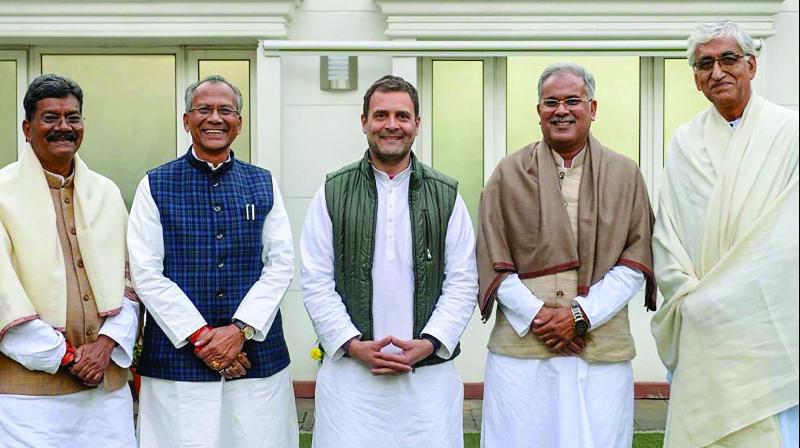The newly elected Congress government in Chhattisgarh has decided to pull out of the ambitious Ayushman Bharat scheme. However, health minister TS Singh Deo did not cite any political reason behind the move. “We are not withdrawing because it is a BJP scheme. Ayushman Bharat is similar to the UPA’s Rashtriya Swasthya Bima Yojana. We are simply implementing our manifesto promise — universal healthcare scheme. Congress had even promised ‘right to health’ in its 2014 parliamentary poll manifesto,” said Deo. To score political points, the Congress government seems to have denied free healthcare facility to lakhs of the people in the state.
The health minister of Chhattisgarh said that there are technical loopholes in the scheme and insurance package is not exactly what Chhattisgarh needs. “We don’t understand why we need to operate insurance packages when we have the entire system of medicine purchase, ASHA worker network and primary healthcare centres in place. We have the manpower and are capable of providing universal healthcare,” he added. But the fact is that the state always has had insurance-based health coverage which helped in improving the health condition of poor and marginalized people.
In 2012, the then state government under Raman Singh launched Mukhyamantri Swasthya Bima Yojana (MSBY) to extend the coverage of Rashtriya Swasthya Bima Yojana (RSBY) to non-BPL families. For a onetime payment of 30 rupees, the state government provided annual insurance cover of 30,000 rupees for which premium was paid by the state government. From October 2017 the insurance cover limit was extended to 50,000 rupees as per the 2013 assembly election manifesto. This scheme covered 55 lakh families, almost 80 percent of the people of the state. The state government launched the second phase of the scheme under Ayushman Bharat scheme extending insurance coverage up to 5 lakh per annum.
The government has been able to spread awareness about education in the Maoist-hit areas of the state. Infant Mortality Rate (IMR) and Maternal Mortality Rate (MMR) of the state declined significantly with insurance-based healthcare scheme. Earlier West Bengal CM Mamata Banerjee also decided to pull out of scheme because the letters sent to beneficiaries had, reportedly, photos of PM on it. “He is sending letters to people across Bengal through post offices claiming that they are behind this health scheme,” said Mamata Banerjee.
Modi government launched Ayushman Bharat scheme on September 23 from Jharkhand. Under the scheme, the Modi government will provide 5 lakh health insurance cover to 50 crore people, which is nearly 40 percent of the population of the country. Besides the insurance cover, the government will create 1, 50,000 wellness centers across the country under the Ayushman Bharat scheme. The families to get benefits of the scheme will be identified from the Socio-Economic and Caste Census (SECC), 2011 data.
The state governments of Telangana, Odisha, Kerala, West Bengal, Chhattisgarh, and Delhi have tried to put a roadblock on the implementation of the scheme. Most of these states are ruled by personality cult leaders of regional parties, therefore, these leaders fear that the scheme will reap political dividends for the BJP. According to the draft of the National Health Policy, “Over 63 million people are faced with poverty every year due to healthcare costs alone. It is because there is no financial protection for the vast majority of healthcare needs.” The scheme launched by Modi government is the largest universal health coverage in the world. In total, thirty-one states and union territories have agreed to implement the Ayushman Bharat scheme.
